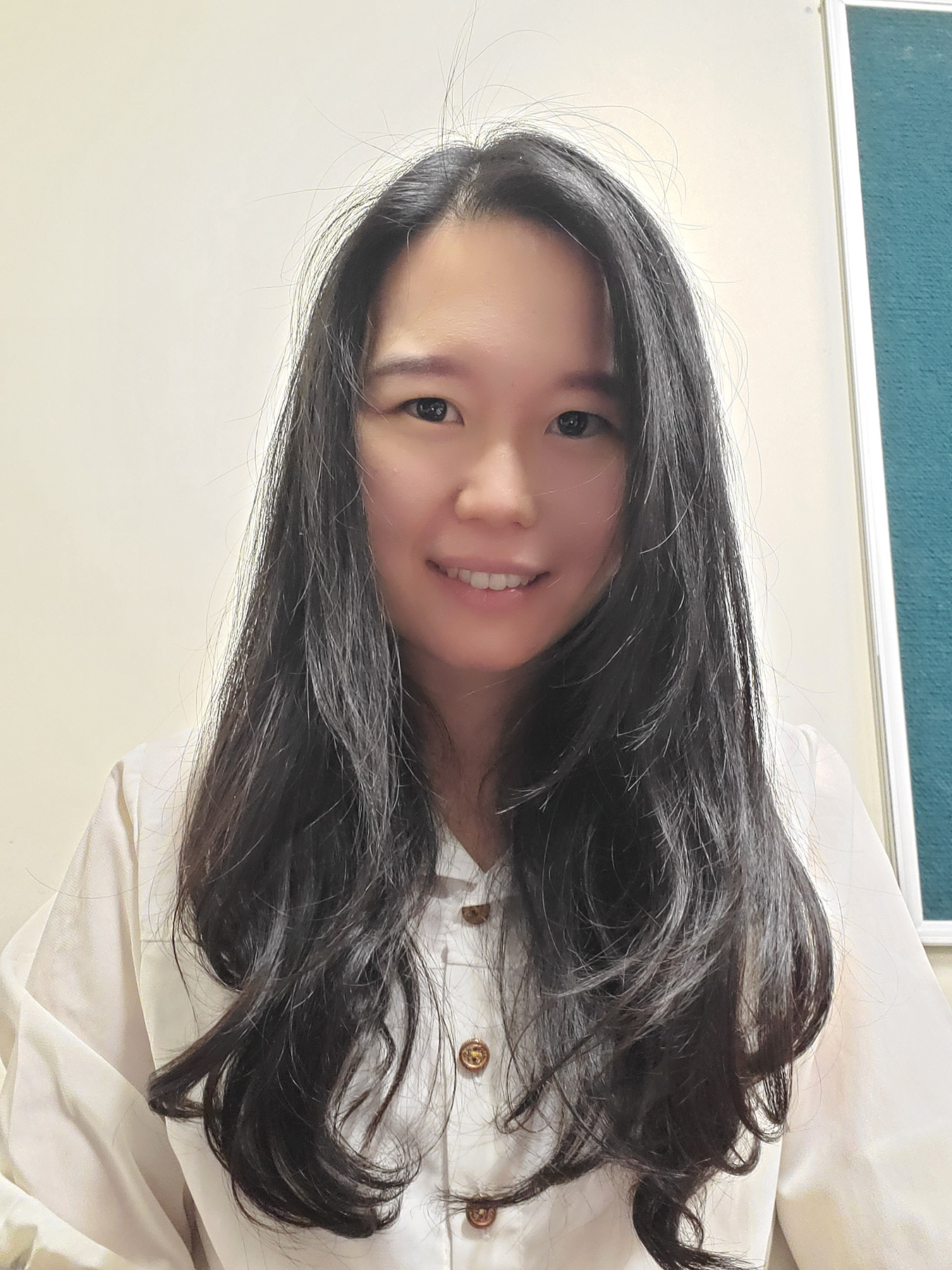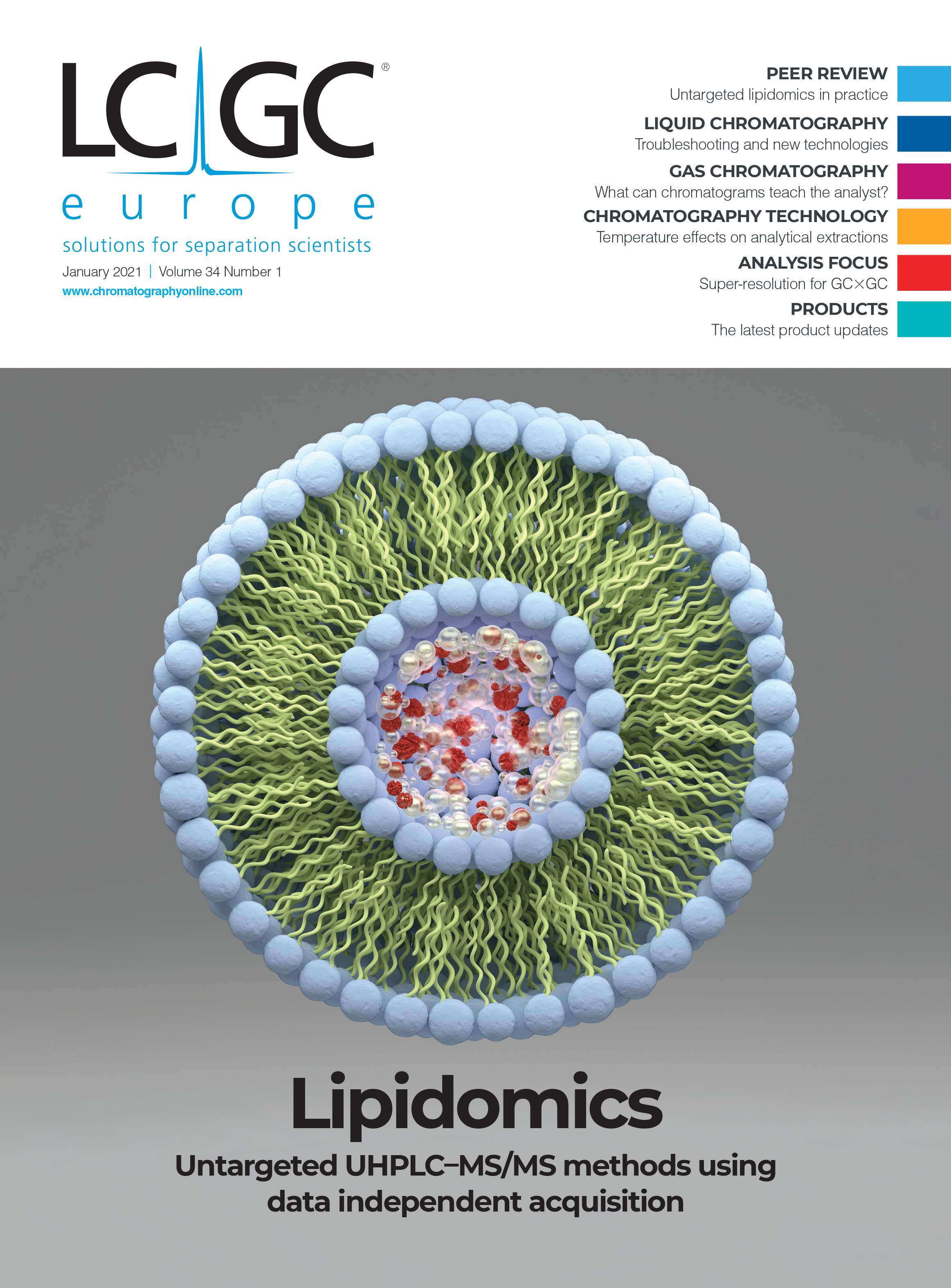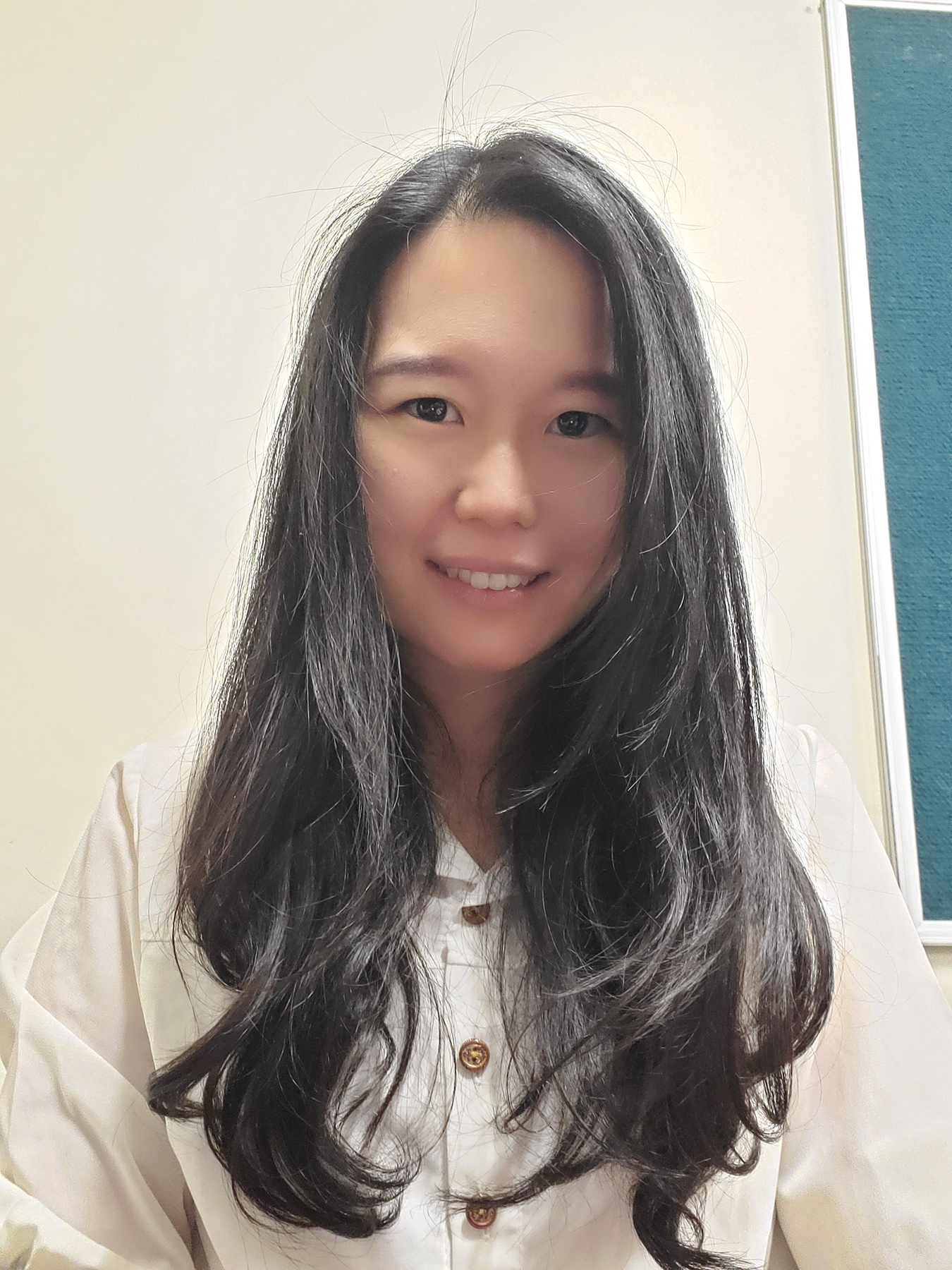Comprehensive Two-Dimensional GC and “Super‑Resolution”
LCGC Europe spoke to Yada Nolvachai about a new approach that offers “super-resolution” for comprehensive two‑dimensional gas chromatography (GC×GC) methods.
Q. The level of information required from practical samples analysis is becoming increasingly more demanding with a need for identification and quantification at much lower levels, and GC×GC methods are being more commonly used. What is the benefit of this technology?
A: GC×GC is a high‑performance separation technique with enhanced peak capacity. Hyphenation with mass spectrometry ideally provides individual molecular‑based information,(that is, assuming adequate resolution) of volatile analytes to provide high confidence identification of several hundred compounds within a single analysis. GC×GC–MS has been reported for the analysis of compounds in multicomponent samples, including petroleum, foods (1), beverages, pharmaceuticals and illicit drugs, environmental extracts, and plant volatiles (2). Compared with one dimensional (1D) GC, GC×GC also provides reduced chemical background through improved isolation of matrix. Improved detection limits are also expected, for example, as a result of the cryogenic trapping/refocusing effect (3). As a result of its capability to analyse complex samples, sample preparation steps, such as liquid‑phase extraction and solid‑phase extraction, can also be reduced or eliminated to avoid the problem of sample loss during sample preparation, which is important, particularly when the sample amount is limited.
Q. What are the challenges associated with GC×GC methods?
A: Alongside the greater capability to analyse trace compounds in a complex sample, the difficulty in data representation and analysis with GC×GC has been widely recognised (2). A GC×GC–MS result could comprise peaks of a thousand compounds. Analysis of the raw data is therefore impractical or the data can be uninformative without proper representation. A challenge is to develop data analysis and representation approaches that provide reliable results with details of all the components of a sample with GC×GC–MS. Chemometrics plays an important role for this level of interpretation.
Q. Your most recent research focused on development of “super‑resolved GC×GC–MS” (4). What was the rationale behind this research?
A: The work was inspired by the question: “Can GC×GC be considered a super-resolution technique?” The word super‑resolution typically has been reserved for spectroscopic imaging, where, by mathematical localisation of the emission centre, the data obtained can be represented as precise emitting centres. In a similar manner, our super‑resolved GC×GC–MS approach involves a mathematical method to combine all modulated peaks of the same compound into the centroid profile, for accurate interpretation of the first- and second‑dimension retention times (1tR and 2tR), analogous to the precise emitting centres of the super-resolution spectroscopic image. We think “super-resolved” captures the essence of expanded separations in a 2D space.
Q. What defines a GC×GC method as “super-resolved?
A: Super-resolved GC×GC involves the data presentation of each compound as the coordinate position (1tR and 2tR as x and y coordinate) with the height representing the magnitude of the compound area (4). With a conventional 3D contour plot (1tR vs. 2tR versus intensity) that has been widely applied with GC×GC–MS, such representation critically depends on scales of the plot (zooming in/out issues) where trace compounds can disappear from a plot normalised to the dominant feature of major compounds. On the other hand, one could represent trace compounds with high noise level, whilst sacrificing detail of the major ones. This is analogous to solely obtaining the details in the focused part and losing the information in the blurred areas of a picture. Additionally, the contour of the peak from a major compound might mask that of minor compounds. With our approach, the data are represented as precise position coordinates rather than contours, which reduces the issues relating to a conventional contour plot.
The super-resolved approach allows the compounds to be detected reliably with greater confidence. For example, we applied the method for the analysis of peach volatiles (4). The method was compared with the conventional extracted ion chromatogram (EIC), where lactone (γ-dodecalactone) was more clearly identified with our technique. In addition, we were able to reliably identify the minor compound (2-butanol), the peak of which was overlapped by that of acetic acid. In general, the method exhibited an excellent reproducibility with % RSD of 0.003–0.066% and 0.305-0.551% for 1tR and 2tR respectively.
Q. Is there scope to improve the separation of your “super-resolved” approach further?
A: Apart from centroid data representation, the use of filtering scripts through extracted ion chromatogram analysis with GC×GC–MS offers the capability for peak deconvolution, where a significantly cleaner target signal can be obtained, which improves data presentation and compound identification. Whilst the present approach focused on the post-data analysis and presentation, there are other means to physically improve separation quality. One way is to develop customised stationary phases for selectivity tuning, allowing target analytes to be selectively separated from the matrix interference. New materials can also be used for improved extraction selectivity during sample preparation, including metal organic frameworks (MOFs) and ionic liquids (ILs), as illustrated in the analysis of hydrocarbons (10), and chiral compounds (12–13).
Q. During your research, you applied GC×GC approaches for the analysis of food samples. What were the conclusions from your research?
A: The approach is feasible for both targeted and non‑targeted analysis. With untargeted analysis, the approach allows the comprehensive data representation of centroids with heights containing the peak area information combining all the modulated peak areas of a compound peak. Combined with the use of extracted ion analysis, the method improves the detection of trace compounds, unravelling the signals of the minor compounds hindered by that of the major compounds, as illustrated for peach samples. The approach is beneficial not only for food analysis, it also has potential for other applications such as for environmental and petrochemical samples. The technique is particularly useful to deconvolute compounds in a highly complex sample, where coelution usually occurs.
Q.You have also investigated novel stationary phases for GC×GC. What were your main findings?
A: I investigated new separation mechanisms and applications of ionic liquids (ILs) and metal-organic frameworks (MOFs) as stationary phases, which offer additional selectivity and good thermal stability. One major finding was the discovery of the unique 1-phase‑GC×GC (5) approach.The work described a theoretical concept and method to achieve a degree of overall 2D separation quality (orthogonality) in GC×GC using only a single IL column (1-column‑GC×GC), which was explained through the concept of thermal‑sensitive behaviour using linear solvation energy relationship (LSER, a concept used to explain the interaction mechanisms between stationary phases and analytes). Combining with the time summation model, 1-phase‑GC×GC is a new approach for IL phase application, contributing to ideas of orthogonality in GC×GC (6). My research also constructed databases of several ILs according to the concept of LSER (5,7,8). As well as conventional polar/non‑polar interactions, several ILs offer hydrogen bond basicity interaction because of the presence of acid moieties in the phase molecules, allowing improved orthogonality in GC×GC. Furthermore, IL stationary phases were found to promote online isomerisation of compounds (oxime) (9). It was also found that MOFs provides a polarity-based interaction with additional shape-selective separation mechanisms (10,11). MOFs were also used for chiral separations (12,13).
Q. You won the inaugural Ervin sz. Kováts award for young scientists. How did your research develop the concepts that Kováts established all those years ago?
A: Apart from understanding details of separation mechanisms, my research introduced novel theoretical concepts and approaches for assisting in experimental design (column selection and optimisation of experimental conditions) in GC×GC. The concept is developed from theoretical approaches to computational software based on the Kováts retention index concept. It is a combination between fundamental studies and chromatographic application for practical sample analysis. Kováts concepts have been at the heart of identification in GC, and also understanding phase-solute interaction. It was an honour to be selected for this inaugural award. The approach was applied on a wide range of compounds such as fatty acid methyl esters (FAMEs), hydrocarbons in petroleum (14), alcohols, aldehydes, terpenes, polychlorinated naphthalenes, and polychlorinated biphenyls (15). The approach has a potential to guide effective stationary phase selection and experimental design, a better understanding of separation mechanisms with conventional and IL stationary phases in GC×GC, and the possibility to design specific stationary phases to improve separation performance.
References
- Y. Nolvachai, C. Kulsing, and P.J. Marriott, TrAC, Trends Anal. Chem.96, 124–137 (2017).
- M.S.S. Amaral, Y. Nolvachai, and P.J. Marriott, Anal. Chem.92, 85–104 (2020).
- Y. Nolvachai, C. Kulsing, K.M. Sharif, Y.F. Wong, S.T. Chin, B. Mitrevski, and P.J. Marriott, TrAC, Trends Anal. Chem.106, 11–20 (2018).
- Y. Nolvachai, L. McGregor, N.D. Spadafora, N.P. Bukowski, and P.J. Marriott, Anal. Chem.92, 12572–12578 (2020).
- Y. Nolvachai, C. Kulsing, and P.J. Marriott, Anal. Chem.87, 538–544 (2015).
- C. Kulsing, Y. Nolvachai, and P.J. Marriott, TrAC, Trends Anal. Chem.130, 115995 (2020).
- A.X. Zeng, S.T. Chin, Y. Nolvachai, C. Kulsing, L.M. Sidisky, and P.J. Marriott, Anal. Chim. Acta.803, 166–173 (2013).
- C. Kulsing, Y. Nolvachai, A.X. Zeng, S.T. Chin, B. Mitrevski, and P.J. Marriott, ChemPlusChem79, 790–797 (2014).
- Y. Nolvachai, C. Kulsing, O. Trapp, and P.J. Marriott, Anal. Chim. Acta1081, 200–208 (2019).
- C.S. Hawes, Y. Nolvachai, C. Kulsing, G.P. Knowles, A.L. Chaffee, P.J. Marriott, S.R. Batten, and D.R. Turner, Chem. Commun.50, 3735–3737 (2014).
- Y. Nolvachai, C. Kulsing, C.S. Hawes, S.R. Batten, D.R. Turner, and P.J. Marriott, J. Chromatogr. A. 1500, 167–171 (2017).
- S.A. Boer, Y. Nolvachai, C. Kulsing, L.J. McCormick, C.S. Hawes, P.J. Marriott, and D.R. Turner, Chem. – Eur. J.20, 11308–11312 (2014).
- J.Y. Chan, H. Zhang, Y. Nolvachai, Y. Hu, H. Zhu, M. Forsyth, Q. Gu, D.E. Hoke, X. Zhang, P.J. Marriot, and H. Wang, Angew. Chem., Int. Ed.57, 17130–17134 (2018).
- C. Kulsing, Y. Nolvachai, P. Rawson, D.J. Evans, and P.J. Marriott, Anal. Chem.88, 3529–3538 (2016).
- Y. Nolvachai, C. Kulsing, and P.J. Marriott, Anal. Chem.88, 2125–2131 (2016).

Yada Nolvachai gained a PhD in Chemistry in 2016, from Monash University, Melbourne, Australia. She is currently a Postdoctoral Research Fellow at Monash University. She is a recipient of the inaugural Ervin sz. Kováts award for Young Scientists presented by the Hungarian Society for Separation Sciences in 2017. She has been invited as a plenary/keynote speaker for several conferences. Her research interests include development of hyphenation techniques, applications of multidimensional gas chromatography (MDGC) with mass spectrometry technologies in food and biological analysis, and computer-assisted experimental design and data analysis. This also includes application of metal organic frameworks and ionic liquids as stationary phase materials, molecular modelling to better understand chromatographic phenomena, oxime isomerisation in ionic liquids with MDGC, methods for improved spectroscopic identification of compounds, and development of computational software guided experimental design in MDGC.

Analysis of Pesticides in Foods Using GC–MS/MS: An Interview with José Fernando Huertas-Pérez
December 16th 2024In this LCGC International interview with José Fernando Huertas-Pérez who is a specialist in chemical contaminants analytics and mitigation at the Nestlé Institute for Food Safety and Analytical Sciences at Nestlé Research in Switzerland, In this interview we discuss his recent research work published in Food Chemistry on the subject of a method for quantifying multi-residue pesticides in food matrices using gas chromatography–tandem mass spectrometry (GC–MS/MS) (1).
The Use of SPME and GC×GC in Food Analysis: An Interview with Giorgia Purcaro
December 16th 2024LCGC International sat down with Giorgia Purcaro of the University of Liege to discuss the impact that solid-phase microextraction (SPME) and comprehensive multidimensional gas chromatography (GC×GC) is having on food analysis.







